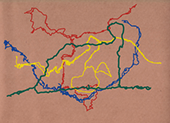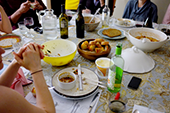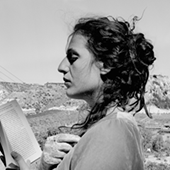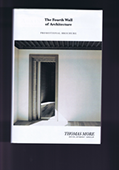Editorial
This is JAR’s tenth peer-reviewed issue. We are massively proud of having made it this far, but also grateful to the many artists and researchers across the globe who have been supporting the project by submitting their expositions of practice as research, by acting as peer-reviewers or – as members of the Society for Artistic Research – by supporting us in general. A big Thank You to all of you. On a more personal level, I would also like to say Thank You to my colleagues past and present on the Editorial Board and the representatives of the Society for Artistic Research: all of you have made sure that we have remained positive, self-critical and supportive of each other. In particular, I would like to thank Barnaby Drabble for his work as Managing Editor during the last years. While I am sad that Barnaby will step down from this role, I am happy to report that he will continue his work on the Editorial Board.
The board is expanding and I welcome Leonella Grasso Caprioli, Yara Guasque, Jen Liese, and Mareli Stolp to the group of now ten editors, who, together with myself, busy themselves assessing submissions and considering the overall direction of our journal. While I don’t want to suggest that the kind of diversity we seek in submissions must be represented on the level of the board, the expanded board brings competencies and extra-European points of view that encourage me in the belief that we can now better capture what is out there and find appropriate responses to the submissions we receive. Please take a moment to check out the new (and old) members of the Editorial Board of JAR here.
In keeping with this tone of thanks, it might be tempting to praise the editorial board for working like a well-oiled machine producing now three issues per year; while, in fact, it acts more like a research network that keeps developing its own understanding of artistic research, continuously problematizing what seems to have been achieved so far. In this, one needs to stress the bottom-up and open submission policy that has proven so rewarding. Here, bottom-up means that we discuss and develop our understanding of artistic research in the context of concrete submissions and as little as possible in general terms. You may have realised that this also extends to JAR contributions, which mostly speak about artistic research by enacting it. Definitions seem to debilitate practice for the most part.
However, a bottom-up approach would not work without a strictly open submission policy since definitions could be applied simply as criteria for selection even if they are never discussed. We all know this from the so-called ‘art market’ which seems to work only by recursive selection where the selected affirm the selector. While this risk to the ‘intellectual conscience’ – to use a term by Nietzsche – always exists (and we would never claim to be immune of it), two almost measureable aspects reassure us for now that we may still be on track. The first lies in what may be called ‘the power of the example’ where each submission can be seen as a test for the journal. The length of discussion that is required, the amount of peer advice we need to seek and the resulting changes to our protocols all indicate that each and every submission does affect us. The intensity of our response, although difficult to share with a wider public, at least for us, tells us that we are still listening – and moving.
The second aspect is diversity. Pretty much every submission is a surprise to us i.e. we do not have a sense of where the limits of the journal lie and what kind of practices or approaches to research may work. We hope that some of this feeds through to the issues that we eventually publish and that with us you are continuously aware of the dedication and specificity of each exposition. While this gives JAR a character, it also subverts demands for universals including the notion of ‘best practice’. The impossibility of anticipating what we both receive and publish and the difficulty of conceptualising what JAR seeks are important markers for the kind of publication that we want to be.
‘Anything goes’ has a strangely negative ring to it, since in the wake of ‘postmodernism’ it seems to announce that differences have become meaningless. Just like for Giorgio Agamben, who stresses the importance of ‘anything whatsoever’ or for Roland Barthes, who suggests an ‘impossible science of the unique being’, ‘anything goes’ is not so much a distant descriptor for a flat world, but a call to find out what this ‘anything’ is in difference to all other anythings. As a reader, you have the choice of looking at JAR as collection of all sorts of things and practices or as celebration of diversity with a decentring effect that helps keep open the question of what JAR or ‘artistic research’, for that matter, actually is.
In JAR 10 we are publishing six expositions that present artistic research in the fields of collective and socially engaged art practice, architecture, photography and expanded cinema performance.
In Colonial Hospitality: Rethinking Curatorial and Artistic Responsibility, Danny Butt & Local Time use philosophical, theoretical and practical tools to consider the positioning of their own collective, research-driven practice in relation to the recent enthusiasm for gestures of hospitality in contemporary art.
Bart L Decroos’ The Fourth Wall of Architecture, deals with the question of how an architectural artefact develops its meaning within a larger discourse through its image. It does so using three short stories, each dealing with a different type of architecture: the single-family house, the hotel room, and the office space.
Elisavet Kalpaxi looks at the role narcissism and narrativity play in her own practice based research project in her exposition Self-portraiture: on photography’s reflexive surface, Drawing on psychoanalytic theory, semiotics, and narratology, she decodes and recovers narcissism as a useful sense-making scenario or system.
Drawing on the work of artist, composer and mushroom hunter John Cage, Christopher Lee Kennedy’s Mycological Provisions considers the use of mycology and chance operation as a method and material for arts-based research. The exposition follows a series of mushroom hunting excursions designed to engage four artist-teachers in collaborative dialogue about their practice and identity
In her contribution, Palestinian Wildlife Series: embodiment in images, critical abstraction, Rania Khalil uses appropriated imagery of African animals shot directly from a television set in Palestine to examine alternative modes of art activism and political uses of abstraction and experimentalism in art and relate them to postcolonial thought.
With Notes on Red76's Occupy Yr. Home, Heath Schultz and Sam Gould, critically review their roles in, and thoughts about, the project 'Occupy Yr. Home', which took the form of a facilitated conversation, over dinner, in a participant's home, addressing themes of occupation and the domestic sphere.
Michael Schwab
Editor-in-chief






